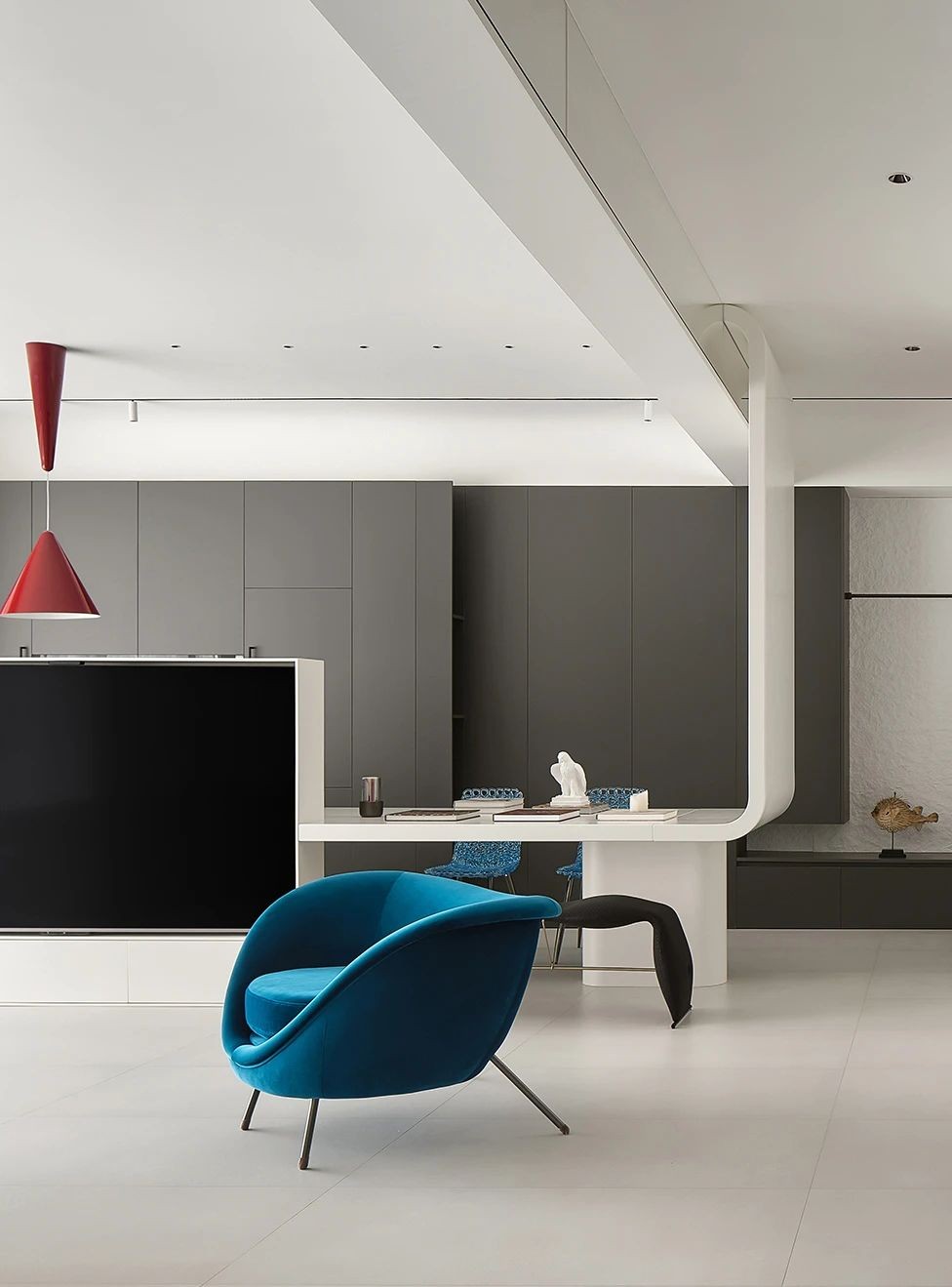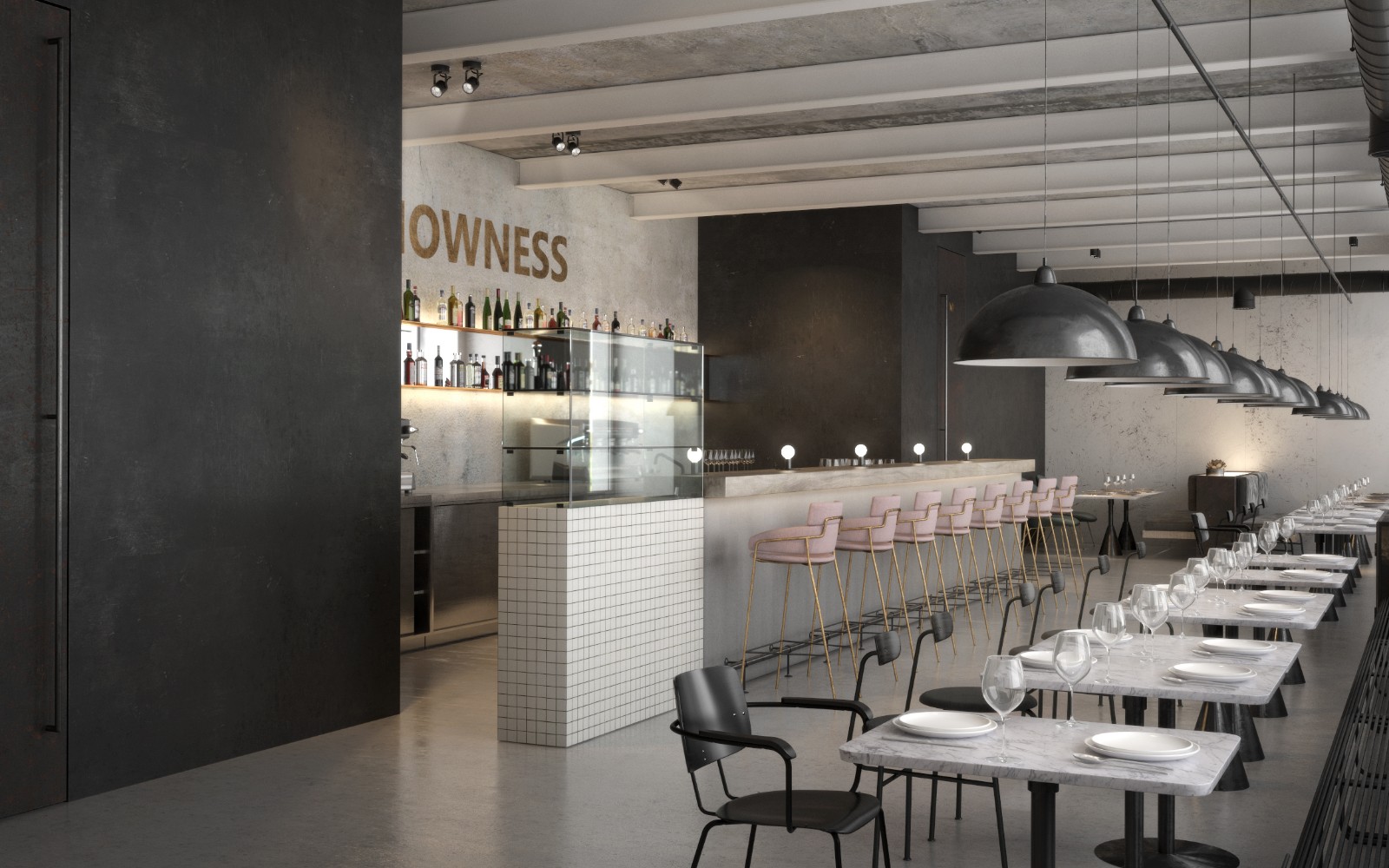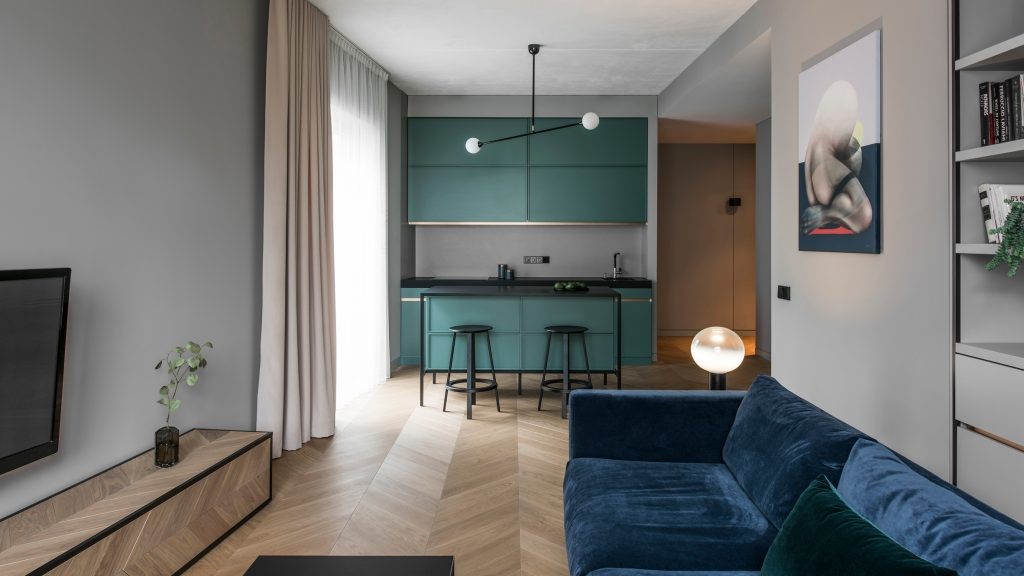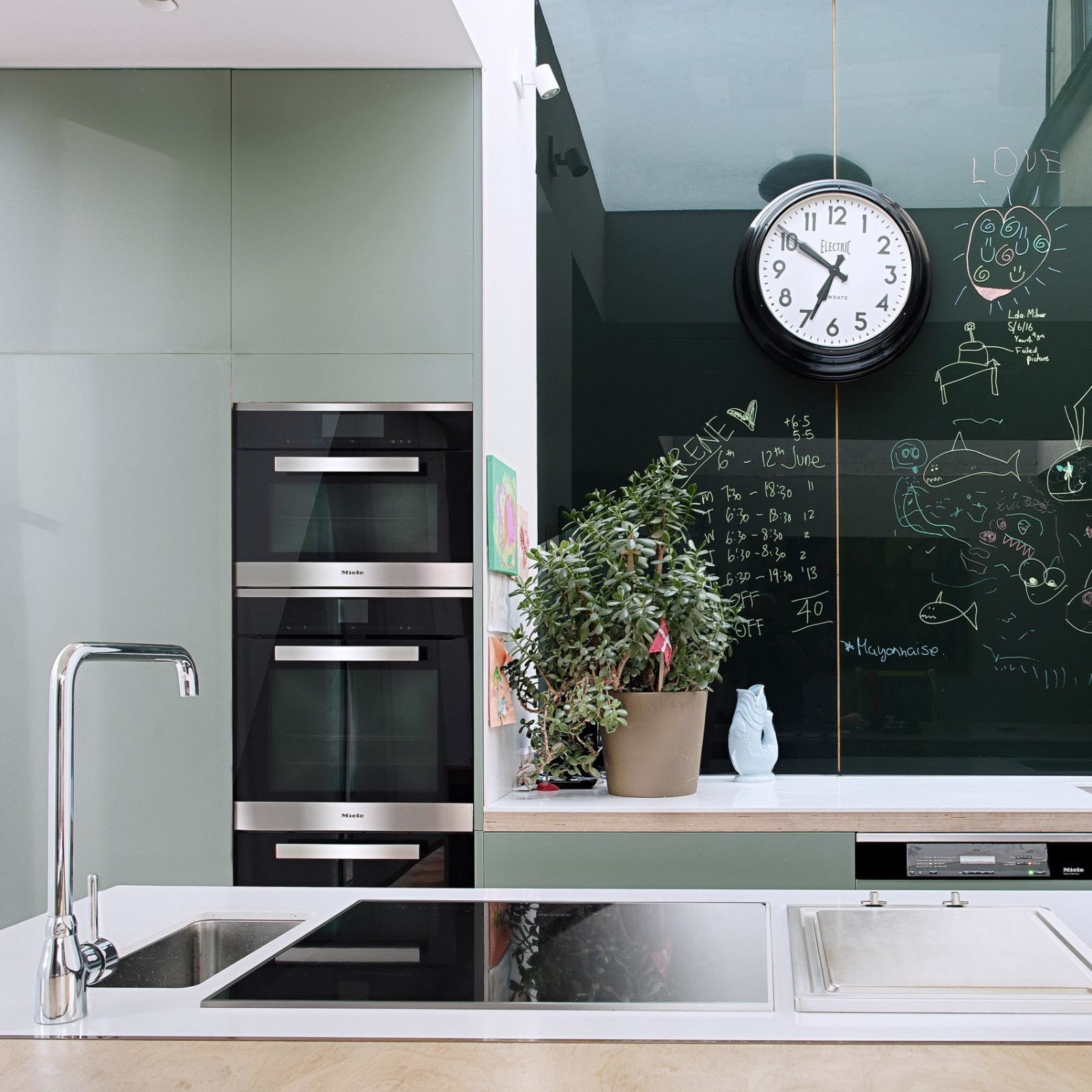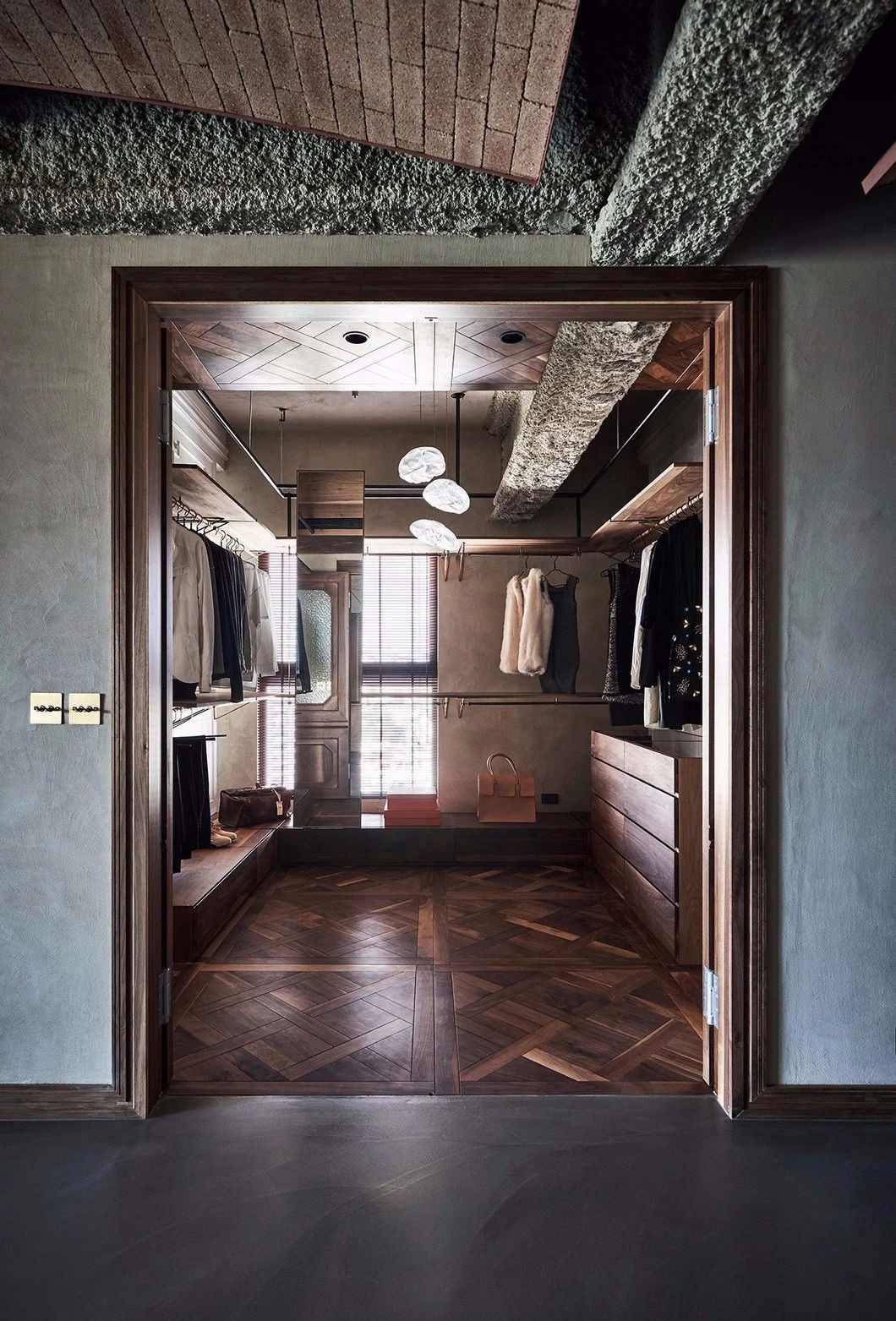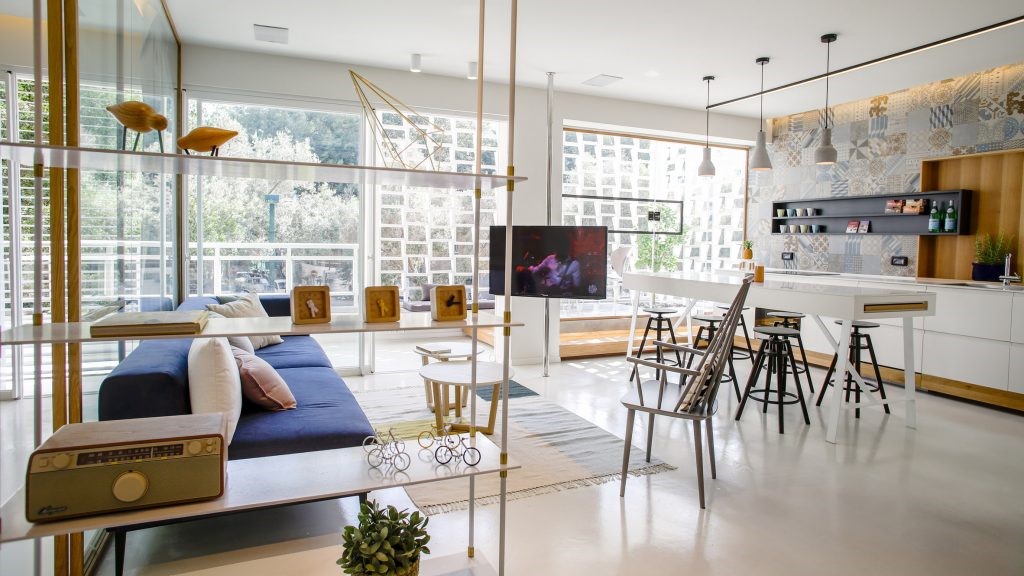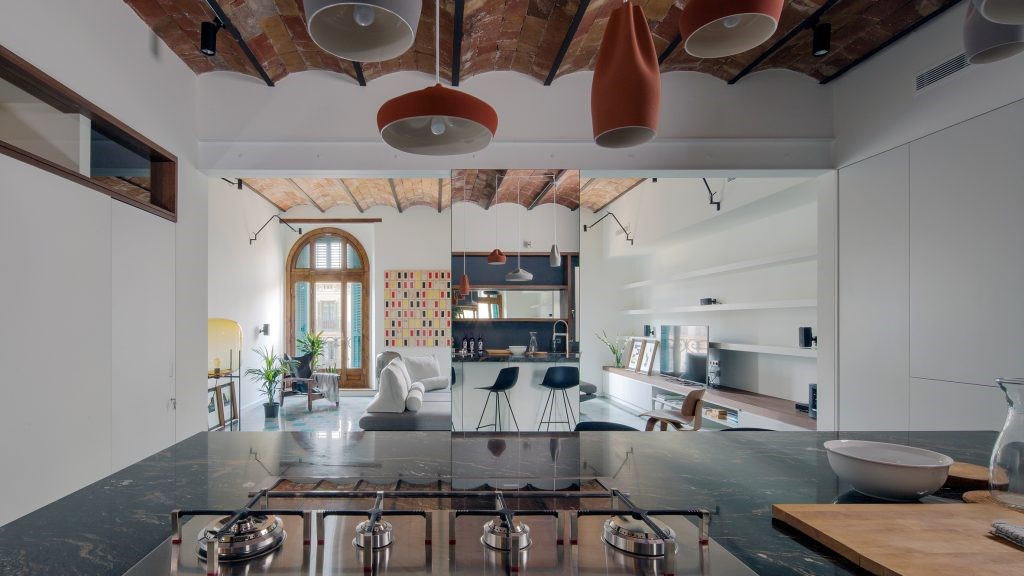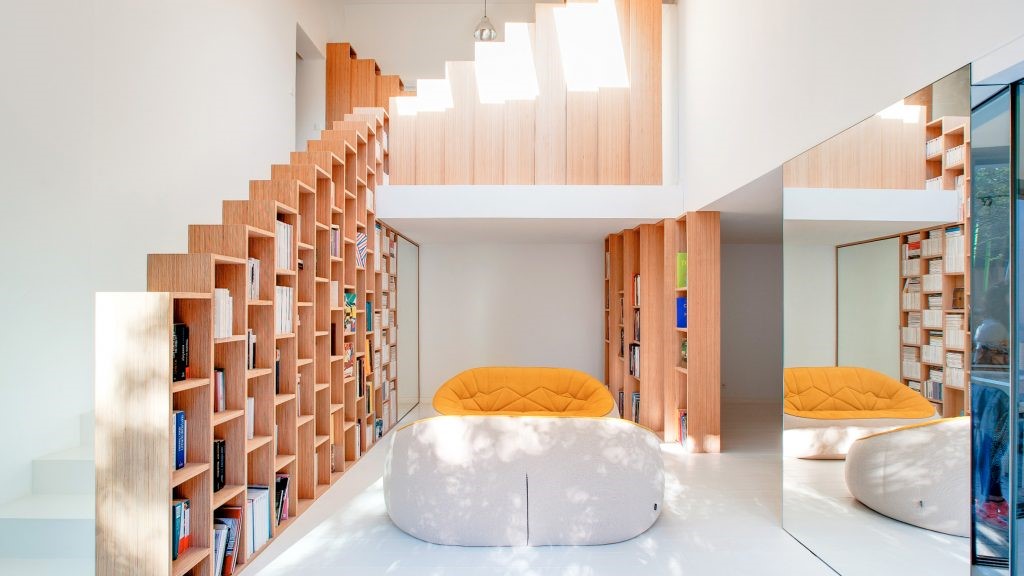DomT House Martin Boles Architect
2016-01-06 09:00
© Erika Banyayova
c.Erika Banyayova
.jpg)

架构师提供的文本描述。DomT的房子是为一对夫妇和他们的两个年幼的孩子准备的,他们以前住在公寓里,现在想要更多的空间和隐私,就像一个家庭的家。
Text description provided by the architects. DomT house was realised for a couple and their two young children, who had previously lived in an apartment, and now desired more space and privacy in the form of a family home.
© Erika Banyayova
c.Erika Banyayova
.jpg)

它位于斯洛伐克北部的一个小镇StaraLubovna。它被黄道建筑风格所包围,比如60年代的家庭住宅,80年代的社会住房发展,以及最近建造的教育设施和住房计划。
It is located in a town Stara Lubovna which lies in northern Slovakia. It is surrounded by a mixture of ecliptic architectural styles like family homes from the 60’s, social housing developments from the 80’s, and recently constructed educational facilities and housing schemes.
Floor Plan


该项目位于一个古老的家庭住宅和花园的地块中,其中一个客户最初是在那里度过童年的。选择这个老网站有助于业主为他们的新家省钱,并认同他们个人关系良好的环境。三棵老桦树,由客户的父亲种植,被保存作为对过去的珍藏记忆,也是一个屏障,以创造更多的隐私,从他们周围的环境。
The project lies within the plot of an old family house and garden, where one of the clients originally spent their childhood years. Choosing this old site helped owners to save money for their new home, and to identify with a well-known environment they personally related to. Three old Birch trees, planted by the client’s father, have been kept as a cherished memory of the past, and also acts as a barrier to create slightly more privacy from their immediate surroundings.
© Erika Banyayova
c.Erika Banyayova
.jpg)

木材已被选为主要的建筑和包层材料,因为它类似于典型的结构,如“斯托多拉”,常见于斯洛伐克庭院和花园。这些木制谷仓是可以找到的,并且仍然是周围一些院子的一部分。
Wood has been chosen as the main construction and cladding material, as it resembles typical structures such as “stodola”, commonly seen in Slovakian yards and gardens. These wooden barns can be found, and are still part of some of the surrounding yards.


一个谷仓的形象形式已经挤压沿该地点的北缘,并打破在中部,以最大限度地利用太阳条件。玻璃外墙模糊了内部和外部之间的边界,并使与花园有很强的联系。现存的梨树之一为木制露台提供了树荫,它不断地将内部空间与外部空间融为一体。
The figurative form of a barn has been extruded along the Northern edge of the site, and broken in the middle to maximize solar conditions. The glazed façade blurs a border between the interior and exterior, and enables a strong connection with the garden. One of the existing pear trees provides shade for a wooden terrace, which continually blends the internal space with the outside.
© Erika Banyayova
c.Erika Banyayova
.jpg)

从结构上讲,它是由轻质木材结构、中心位置的承重混凝土墙和玻璃幕墙后面的钢柱组成的。房子的外部已经覆盖了未经处理的西伯利亚落叶松,预计随着时间的推移,它的颜色将逐渐变成银灰色。粗糙的材料概念同样适用于花园中的相邻建筑物,并且在承重混凝土砌块墙内部被重复使用。
Structurally it is a combination of the lightweight timber structure, the centrally located load-bearing concrete walls and the steel columns behind the glass façade. The exterior of the house has been clad in untreated Siberian Larch, which is expected to gradually change its colour to silver grey over time. Rough material concept is similarly used for adjacent buildings in the garden, and it is repeated within load-bearing concrete block walls in the interior.


云杉是一种传统的乡土材料,广泛应用于室内,提供了一种“幸福”的感觉。它用于地板,窗框,门,一个修筑的厨房和一个14米长的衣柜,从房子的中心一直延伸到父母的卧室。用一组天然材料与混凝土墙进行对比。
Spruce, which is a traditional local material, is extensively used in interior and provides a sense of “well-being”. It is used for the floor, window frames, doors, a build-up kitchen and a 14 m long wardrobe that continually extends from the centre of the house into parents’ bedroom. A collection of natural materials are used to contrast with the concrete walls.
© Erika Banyayova
c.Erika Banyayova
.jpg)

房子中央有一个宽敞的空间,它结合了厨房、客厅和中央位置的餐桌。客厅里的一个炉子可以作为额外的热源和暖气。
There is a generous opening of space located in the middle of the house, which combines the kitchen, living room and centrally positioned dining table. A single stove in the living room works as an additional source of heat and warming light.
© Erika Banyayova
c.Erika Banyayova
.jpg)

从概念上讲,两个被称为“盒子”的混凝土砌块为房屋提供了基本的结构支撑。这些箱子装满了在家里发现的几种功能,如浴室、技术室和储藏室、厨房部分、图书馆、烟囱和用于隐藏楼梯的结构墙。它们在视觉上与外墙分离,因此中心的生活空间在光学上更大,并允许内部路线和组织更自由。
Conceptually, two concrete blocks, referred to as “boxes”, offer the primary structural support for the house. These boxes are packed with several functions found in the home such as bathrooms, technical rooms and storage, parts of the kitchen, library, chimney and structural walls for concealing the staircase. They are visually detached from the external walls, so that the central living space is optically larger, and allows more freedom for internal routes and organisation.
© Erika Banyayova
c.Erika Banyayova
.jpg)

屋檐下还有另外两间木屋,用于满足个人需要:听音乐、放松、工作或与孩子们一起玩耍。这两个房间都有天窗,可以看到外面的世界,而内部的窗户可以看到房子的中央空间。屋顶上的一个特殊开口(与儿童房相连)面向的是历史城堡的景观,这是该镇的一个重要而持久的象征。
There are two additional wooden rooms placed under the roof as well, which are used for personal needs: listening to music, relaxing, working or a playing with the children. Both rooms have skylights, offering views to the outside world, while internal windows reveal a view into the central space of the house. A particular opening in the roof (which is connected to the children's room) is oriented towards a view of the historical castle, an important and lasting symbol of the town.


能源效率和可持续性在设计的发展中发挥了重要作用。45厘米厚的绝缘,用于外墙,提供足够的保护,以抵御寒冷的冬天。中欧的气候条件,特别是斯洛伐克的这一地区,其特点是极端的温度差异;夏季为30摄氏度,在严寒的冬季为-30℃。
Energy efficiency and sustainability has played an important role in the development of the design. 45 cm thick insulation, used for external walls, offers enough protection against the cold of winter. Climatic conditions for central Europe, especially this part of Slovakia, are characterised by extreme differences in temperature; between 30°C in summer, and -30°C during the bitterly cold winters.
© Erika Banyayova
c.Erika Banyayova
.jpg)

慷慨的南面开口有助于自然加热内部,并保持低能耗在冬季。混凝土砌块墙,暴露在阳光下,利用“被动太阳能”来储存多余的能量。而木立面,自然通风的屋顶,现有的树木和额外的屏风,有助于防止房屋在夏季过热。交叉通风是为了在非常温暖的日子里保持舒适。
Generous south facing openings help to heat the interior naturally, and keep energy consumption low during the winter. Concrete block walls, exposed to the sunlight, take advantage of using “passive solar gain” to store excess energy. While the wooden façade, the naturally ventilated roof, the existing trees and the additional screens, help keep the house from overheating during the summer. Cross ventilation is introduced to keep things comfortable during extremely warm days.
.jpg)

.jpg)

.jpg)

.jpg)

.jpg)



.jpg)

.jpg)

.jpg)

.jpg)

.jpg)

.jpg)

.jpg)

.jpg)

.jpg)

.jpg)

.jpg)

.jpg)

.jpg)

.jpg)



.jpg)

.jpg)

.jpg)

.jpg)

.jpg)

























Architects Martin Boles Architect
Location Stará Ľubovňa, Slovakia
Category Houses
Area 140.0 sqm
Project Year 2015
Photographs Erika Banyayova















